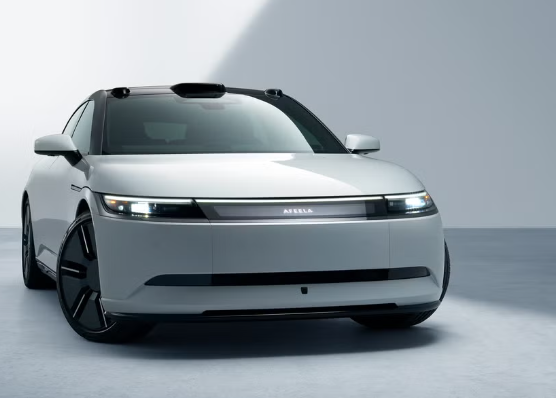Inside an Electric Car: A Guide to Its Main Components

The world of electric vehicles (EVs) has seen explosive growth over the past decade, transforming the way we think about transportation. As more people embrace the shift to electric cars, understanding how these vehicles work has become essential. Unlike traditional gasoline-powered cars, electric vehicles operate with a completely different set of components, making them both more energy-efficient and environmentally friendly. In this guide, we’ll take a look at the main components of an electric car and explore how they work together to provide a smooth and eco-friendly driving experience.
1. Battery Pack
At the core of every electric vehicle is its battery pack. The battery is what stores the electricity that powers the car’s motor and provides the driving range. Unlike traditional car batteries, which only power accessories like lights and radios, EV batteries are much larger and more complex, designed to store significant amounts of energy.
Most modern electric cars use lithium-ion (Li-ion) batteries because of their high energy density and efficiency. These batteries are made up of hundreds or even thousands of individual cells, each contributing to the overall energy storage. The larger the battery pack, the longer the vehicle can travel on a single charge. Battery packs also come with sophisticated management systems to monitor their health and prevent overheating, ensuring longevity and safety.
2. Electric Motor
While traditional cars rely on an internal combustion engine to create power, electric cars use electric motors to convert electrical energy into mechanical motion. The electric motor is one of the key components responsible for an EV’s impressive acceleration and smooth performance.
Electric motors operate on the principle of electromagnetism. When electricity flows through a set of coils, it generates a magnetic field that causes the rotor inside the motor to spin. This spinning rotor then drives the wheels of the vehicle. Because electric motors provide torque instantly, EVs can achieve rapid acceleration, making them ideal for city driving and high-performance models. Another benefit is the lack of vibrations or noise typically associated with gas-powered engines.
3. Inverter
The inverter is another crucial component in an electric vehicle, responsible for converting the direct current (DC) electricity stored in the battery into alternating current (AC) electricity to power the motor. While most batteries, including those in electric vehicles, store energy in DC form, electric motors require AC to operate efficiently.
In addition to powering the motor, the inverter also helps with regenerative braking—a system that recovers energy during braking and sends it back to the battery. This feature enhances the vehicle’s efficiency, allowing it to recapture some of the energy that would otherwise be lost during braking.
Read also: Precision Tools for High-Volume Metal Processing
4. Charging Port and Charging System
To recharge the battery, electric vehicles come equipped with a charging port. This port allows the vehicle to connect to various types of charging stations, including home chargers, public fast chargers, and commercial charging networks. The charging system manages how power flows from the charger to the battery and ensures that the vehicle’s battery is charged safely.
There are different levels of charging for EVs:
- Level 1 Charging: Standard household outlets provide a slow charging rate, typically adding about 4–5 miles of range per hour.
- Level 2 Charging: Found in homes and public charging stations, this provides faster charging, usually adding 20–25 miles of range per hour.
- DC Fast Charging: This ultra-fast charging option can add 60–80 miles of range in just 20 minutes, but it’s typically available only at dedicated public charging stations.
5. Thermal Management System
Electric cars need an efficient way to manage heat, especially given that batteries and electric motors generate a lot of heat during use. The thermal management system helps regulate the temperature of the battery, motor, and other components, ensuring they stay within optimal temperature ranges. This system typically uses liquid coolant to maintain temperature and prevent overheating, which could otherwise damage the components or reduce performance.
This system is particularly important for maintaining battery longevity. Excessive heat can degrade battery life, so keeping the battery at a stable, cool temperature is crucial for maximizing the vehicle’s range and overall efficiency.
6. Regenerative Braking System
One of the most notable features of electric cars is regenerative braking. Unlike traditional braking systems, which use friction to slow the car down, regenerative braking recovers energy that would typically be lost as heat during braking. When the driver applies the brakes, the electric motor switches into reverse, acting as a generator and converting kinetic energy back into electrical energy, which is then sent to the battery.
This not only helps extend the vehicle’s driving range but also reduces wear and tear on the brake pads, lowering maintenance costs.
7. Power Electronics Controller
The power electronics controller is responsible for managing the flow of electricity from the battery to the electric motor. It acts as the “brain” of the electric car, controlling how much power the motor needs based on the driver’s input. The controller ensures that the motor receives the correct voltage and current, providing smooth acceleration and efficient use of power.
This component also plays a role in regenerative braking, adjusting the energy flow to optimize power recovery.
8. Transmission (Single-Speed Gearbox)
Most electric cars are equipped with a single-speed gearbox because electric motors deliver power efficiently across a wide range of speeds, eliminating the need for multiple gears. Traditional gasoline vehicles need multi-speed transmissions to optimize engine power across different driving conditions. However, electric motors provide constant torque, meaning that a single-speed transmission is enough to handle all driving scenarios, making the vehicle simpler and more reliable.
In Conclusion
Electric vehicles mark a major leap forward in automotive technology, and gaining insight into the components that drive them reveals the cutting-edge innovations behind these environmentally conscious machines. From high-capacity batteries that store energy to motors that deliver instant torque, every part plays a vital role in creating a clean, efficient, and smooth ride.
With the expertise of precision gear manufacturing companies, these components are engineered to work in perfect sync, enhancing performance and reliability. As advancements continue, we can look forward to even greater breakthroughs in electric vehicle design—further transforming the way we move through the world.





